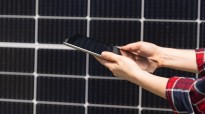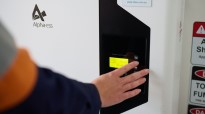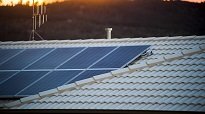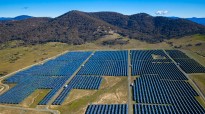Before you install solar or battery generation, we need to assess the impact your system will have on our local network and your neighbourhood.
All embedded generation installations must comply with our Service and Installation Rules and embedded generation technical requirements. Make sure your installer is accredited with the Solar Accreditation Australia.
Apply for solar and other embedded generators
Your chosen installer will submit a Special Connection Request (SCR) to us through our DER Portal. The application will collect information on the system specifications, settings, and operation modes. We will assess it to ensure our network can support your system.
Before installation begins, ask your installer for a copy of the Evoenergy approval letter. If a meter upgrade is required, contact your installer or energy retailer.
In some circumstances systems energised and connected to our distribution network may be deemed unsafe if they do not comply with our requirements and Australian Standards. This may result in disconnection from the Evoenergy network.
Your testing requirements
You are required to have your inverter tested at least once every five years. This test is performed by an electrician to check it is still safely connected to our network. We will send you a reminder when this testing is due.
If any components of your system require replacing, your installer will need to submit a new SCR and receive approval from us before completing the work.
We also encourage you to learn more about solar safety.
Solar export limits
While your solar panels may be able to feed electricity back to the grid, we need to ensure the reverse power flows from solar don’t exceed the capacity of our network. Export limits control the amount of electricity your system can feed into the grid and is typically managed by an inverter fitted with an energy meter.
A 5kVA per phase export limit applies to all residential solar systems to ensure you and your neighbourhood have a safe and reliable electricity supply. Using your solar generated power during the day, battery storage options or upgrading to three-phase power can minimise the impact of export limits. If you live in an embedded network, the available export for your unit may be less than 5kVA per phase. Contact your embedded network manager for more details about the site export arrangements.
If you notice your inverter keeps switching off or reducing output, this means the system is responding to changes in voltage. To find out if this is something you should investigate, visit our power quality page.
Solar metering
Solar installations require a bi-directional meter to be installed prior to the system becoming active. If you have basic meter (Type 6) that is not already programmed to record bi-directional power, you will need to upgrade to a smart meter (Type 4). You will need to contact your energy retailer to arrange this. Learn more on our meters page.
All new residential embedded generation systems are connected under a net metering arrangement. This means any solar generated will first be used by electrical appliances within the premises with only excess generation fed back to the electricity grid.
Solar tariffs
Solar tariff arrangements can be set up with your energy retailer.
Electricity Feed-in (Renewable Energy Premium) Scheme customers who were eligible to join this scheme will receive FiT tariffs for a maximum of 20 years. While the ACT Government Premium Feed-in Scheme commenced in 2009 and closed to new applicants in 2011, customers who move into a premises with an already eligible PV solar system are entitled to take over the entitlement. If you live, or move into a home with a solar system connected under this Scheme, read our factsheet for more information.




